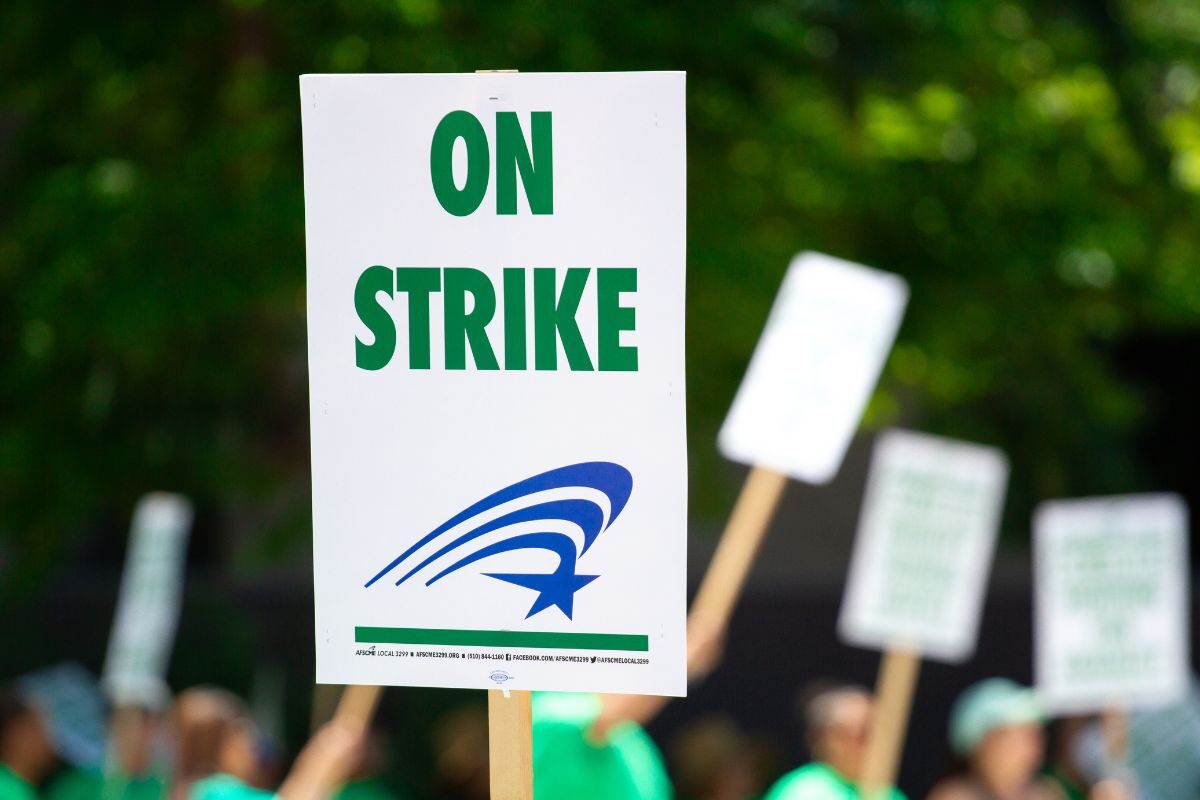Real-term pay falls fuel strikes

Real-term pay falls fuel strikes – but increased public sector vacancies mean the Government must follow private-sector trends when it comes to pay
3.9 million working days have been lost to industrial action in the past year – more days than at any point since the 1980s – with many of the strikes fuelled by the fact that highly-unionised public sector workers have experienced average real terms pay falls of over 9 per cent since 2021, the Resolution Foundation said in new analysis published today (Monday).
The Foundation’s quarterly Labour Market Outlook examines the drivers behind the ongoing strikes and high vacancy rates in the public sector.
Recent industrial action has overwhelmingly been concentrated among sectors that are unionised, the Outlook says: mainly the public sector (health, education and public administration), and the postal services and railways, both of which used to be part of the public sector. Together these significantly publicly-funded industries, which account for 69 per cent of total union membership in the UK, have been responsible for 96 per cent of all days lost to strike action since 2021.
High inflation meant that average weekly pay for all workers was 4.1 per cent lower in real terms in the three months to May 2023 than it was in the three months to May 2021. For public sector workers, though, the hit was especially severe: real-terms pay for these workers as a whole fell by 9.2 per cent over the same period (compared to a fall of 2.9 per cent in the private sector), with real-terms pay for public-sector workers in health and social care falling by 9.8 per cent (compared to 3 per cent for private sector workers in the same industry).
In the four decades up to 2010, the raw difference between pay in the public and private sectors was trending upwards, with public sector workers’ pay rising relative to pay in the private sector. Since 2012, however, the raw difference between pay in the public and private sectors has been falling, and the ‘public sector premium’ (the difference between public and private sector pay after controlling for hours worked and worker characteristics) has also been falling and is now slightly negative.
That said, the Foundation says that policymakers should remember that the strikes are not just about pay. Working conditions, exhaustion, on-the-job stress and falling pay satisfaction also play an important part, with data from the Skills and Employment Survey showing that, in 2017 (the most recent data available), the proportion of public sector workers saying they were always or often ‘coming home exhausted’ stood at 57 per cent (although 48 per cent of private sector workers also reported feeling this way, pointing to wider problems with job quality and working conditions across the UK).
The recent pay squeeze in the public sector also appears to have contributed to a larger relative increase in vacancies in the public sector, with vacancies in the mainly-public-sector industries of health, education and public administration 33 per cent higher in March 2023 than in December 2019, compared to 23 per cent higher across the rest of the economy.
This is a reminder, the Foundation says, that decisions about public sector pay will always be constrained by the need to provide functioning public services, and that will require an appropriate level of staffing. Going forwards, this means that pay and conditions in the public sector are unlikely to drift too far apart from those in the private sector: if they do so, it will become increasingly difficult for the public sector to attract workers.
Nye Cominetti, Senior Economist at the Resolution Foundation, said:
“The recent strikes from teachers and junior doctors reflect the fact that real-terms public sector pay has fallen severely in the past few years, as well as the stress and difficult workplace conditions frequently reported by workers in these sectors.
“However, the inflation-driven pay squeeze should also be understood as part of a broader pattern of poor pay growth across both the public and private sectors, and falling pay satisfaction among public sector workers.
“Going forwards, the Government will need to balance fiscal caution with the need to provide a level of pay for public-sector workers that reflects the very real difficulties faced by workers in these sectors, and ensures that vacancies in these sectors continue to be filled.
“In addition, there should also be a renewed focus on improving pay and working conditions for workers in essential sectors like social care, that are largely not unionised, but which are still experiencing the effects of job stresses and pay squeezes.”











Responses